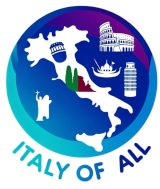The province of Brescia, located in the Lombardy region of northern Italy, is one of the largest and most industrially significant provinces in the country. Renowned for its rich history, diverse landscapes, and dynamic economy, Brescia combines cultural heritage with robust modern development.
Geographically, Brescia spans from the southern shores of Lake Garda, Italy’s largest lake, to the northern reaches of the Lombard Alps. This varied terrain includes picturesque lakes, fertile plains, and mountainous areas, offering a wide range of outdoor activities such as sailing, skiing, and hiking. The region is also known for its natural thermal springs, particularly in areas like Sirmione on Lake Garda.
Historically, Brescia has a storied past, dating back to pre-Roman times. It became a significant Roman colony and was later an important medieval city. The city of Brescia contains numerous historical sites, including Roman ruins, medieval castles, and Renaissance squares. One of its most notable sites is the Roman Capitolium and the medieval complex known as the Old Cathedral.
Culturally, Brescia is a hub of Italian art and history. The city hosts the Mille Miglia, an annual vintage car race that celebrates Italy’s motoring heritage. Additionally, the province is home to several museums, galleries, and theaters that reflect a strong tradition in the arts. The Santa Giulia Museum, a UNESCO World Heritage Site, is particularly significant for its collection spanning from Roman times to the Renaissance.
Cuisine in Brescia reflects the rich agricultural produce of the region. Local specialties include “casoncelli” (stuffed pasta), “polenta,” and various cheeses like Grana Padano and Taleggio. The province is also famous for its wines, particularly Franciacorta, a prestigious sparkling wine produced in the vineyards south of Lake Iseo.
Economically, Brescia is one of the most industrially developed provinces in Italy, with a strong presence in sectors such as machinery, metallurgy, and automotive. It is particularly noted for its steel production and precision engineering. The area around Lake Garda also boosts the economy through tourism, attracting visitors with its beautiful landscapes, historic towns, and leisure activities.
Despite challenges such as balancing industrial growth with environmental concerns and managing the impacts of tourism, Brescia continues to thrive by promoting sustainable practices and leveraging its cultural and natural resources.
Overall, the province of Brescia offers a vibrant mix of history, culture, and economic strength. Its ongoing initiatives to foster sustainable development while preserving its unique heritage ensure its continued prominence within Italy’s Lombardy region and beyond.
Comuni in Brescia Province:
- Anfo
- Bienno
- Bagnolo Mella
- Angolo Terme
- Botticino
- Borgosatollo
- Borgo San Giacomo
- Bassano Bresciano
- Bovegno
- Adro
- Borgo San Giovanni
- Alfianello
- Berzo San Fermo
- Barbariga
- Azzano Mella
- Agnosine
- Bedizzole
- Bione
- Bagolino
- Barghe
- Artogne
- Bovezzo
- Capovalle
- Caino
- Calvagese della Riviera
- Castenedolo
- Calcinato
- Carpenedolo
- Capriano del Colle
- Castrezzato
- Carzano
- Capo di Ponte
- Castelcovati
- Capriolo
- Brione, TrentinoBriosco
- Castegnato
- Casto
- Brescia
- Calvisano
- Castel Mella
- Braone
- Edolo
- Cimbergo
- Corte Franca
- Collebeato
- Chieve
- Flero
- Desenzano del Garda
- Coccaglio
- Cedegolo
- Concesio
- Corteno Golgi
- Cevo
- Esine
- Darfo Boario Terme
- Corte de’ Frati
- Comezzano-Cizzago
- Cividate Camuno
- Cellatica
- Darè
- Cazzago San Martino
- Cigole
- Cerveno
- Erbusco
- Cerete
- Fiesse
- Gottolengo
- Gavardo
- Manerba del Garda
- Lumezzane
- Lonato del Garda
- Lozio
- Gardone Val Trompia
- Losine
- Lodrino (BS)Lograto
- Mairano
- Gargnano
- Manerbio
- Iseo
- Gianico
- Gussago
- Lavenone
- Marcheno
- Malegno
- Isorella
- Marone
- Idro (BS)
- Mazzano
- Gambara
- Incudine
- Maclodio
- MaloMalonno
- Limone sul Garda
- Monno
- Nave
- Moniga del Garda
- Monte Isola
- Offlaga
- MiloMilzano
- Odolo
- ** Nuvolera
- Montirone
- Nuvolento
- Paspardo
- Muros (SS)Muscoline
- Paderno Franciacorta
- Ono San Pietro
- Ossimo
- Monticelli Brusati
- Orzinuovi
- Padenghe sul Garda
- Passirano
- Pavone del Mella
- Montichiari
- Paitone
- Orzivecchi
- Palazzolo sull’Oglio
- Ospitaletto
- Paratico
- Niardo
- Paisco Loveno
- Rovato
- Provaglio Val Sabbia
- Puegnago sul Garda
- Roè Volciano
- Roccafranca
- Remedello
- Pontoglio
- RudaRudiano
- Rezzato
- Piancogno
- Salò
- Pertica Alta
- Rodengo-Saiano
- Pompiano
- Preseglie
- ** Roncadelle
- Pralboino
- Polpenazze del Garda
- Ponte di Legno
- Pezzaze
- Sabbio Chiese
- Sale Marasino
- Prevalle
- Pisogne
- Pian Camuno
- Pontevico
- Pertica Bassa
- Polaveno
- Poncarale
- ** Pozzolengo
- Quinzano d’Oglio
- Provaglio d’Iseo
- Sellero
- Soiano del Lago
- Sarezzo
- Solferino
- Sulzano
- San Gervasio Bresciano
- Sirmione
- Saviore dell’Adamello
- Seniga
- San Zeno Naviglio
- ** SonaSoncinoSondalo
- Sover
- San Felice del Benaco
- Serle
- Sonico
- Verolavecchia
- Temù
- Tignale
- Trenzano
- Travagliato
- Vallio Terme
- Villachiara
- Tremosine sul Garda
- Villanuova sul Clisi
- Treviso Bresciano
- Tavernole sul Mella
- Torbole Casaglia
- Visano
- Vestone
- Villa Carcina
- Zone
- Vione
- Urago d’Oglio
- Vobarno
- Toscolano-Maderno
- Vezza d’Oglio
- Verolanuova
